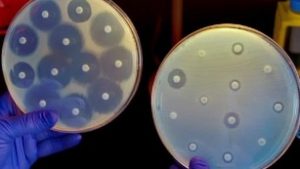Metagenomics approach for genetic inventory of microbes to identify, quantify, document, and archive broadest spectrum of potential terrestrial contaminants during the spacecraft assembly process. The NASA Postdoctoral Program (NPP) provides early-career and more senior scientists the opportunity to share in NASA’s mission, to reach for new heights and reveal the unknown so that what we …
Just a quick post here. There is a new CNN story that may be of interest. An antibiotic-resistant superbug will launch from the same pad where the first manned mission to the moon lifted off to be studied on the International Space Station. Source: Why NASA is sending a superbug to the space station – …
I have copied this text from an announcement I received in an email from Paul Olsiewski of the Alfred P. Sloan Foundation: The Alfred P. Sloan Foundation announces a funding opportunity in its Microbiology of the Built Environment (MoBE) program, the Sloan ISS MoBE Postdoctoral Fellowship―Research Opportunities for Post-Doctoral Fellowships in Space Biology to Study …
Just a mini post here. Got pointed to this press release of possible interest on a collaboration to study microbes on the space station and on other spacecrafts using single cell approaches: Source: NASA, Bigelow Laboratory Study Microbes on Spacecrafts – Bigelow Laboratory for Ocean Sciences
In parallel to the Alfred P. Sloan Foundation offer of two postdoctoral fellowships to study the microbiology of the ISS, NASA is also issuing a pair of postdoc fellowships on their end. The collaboration between Sloan and NASA is great to see, since there is significant overlap between their interests in this field. I’m really …
On April 11 there was a meeting in Washington DC that was part of an effort from a new study being conducted by the National Academies of Science, Medicine, and Engineering on “Microbiomes of the Built Environment”. Videos and slides from the meeting have now been posted. I have compiled them below. In addition, I …
This is the third of three posts about the planetary protection workshop I attended at NASA Ames from March 24-26, 2015. The first is here. I mentioned, in my last post on forward contamination, that reverse contamination is the primary concern for Planetary Protection (PP). In this context, reverse contamination refers to the transport of Martian …
This is the second of three posts about the planetary protection workshop I attended at NASA Ames from March 24-26, 2015. The first is here (and here.) Forward contamination, in the context of planetary protection, refers to the transport of microbes from Earth to Mars. The title of the workshop, and many talk titles refer to “human …
Well, here is another benefit of automated Google Scholar searches. I think it is unlikely I would have found these new papers without such searches but these are fascinating and directly relevant to many aspects of work we are doing on Project MERCCURI. A series of papers on microbial ecolog and space travel in the …
I’m proud to announce that the sample collection for the building science component of Project MERCCURI is complete! In early May, Koichi Wakata from JAXA (Japan’s space exploration agency) collected swabs swabs of surfaces aboard the International Space Station. Back in June last year, Jenna, Wendy and I went to the Johnson Space Center in …




